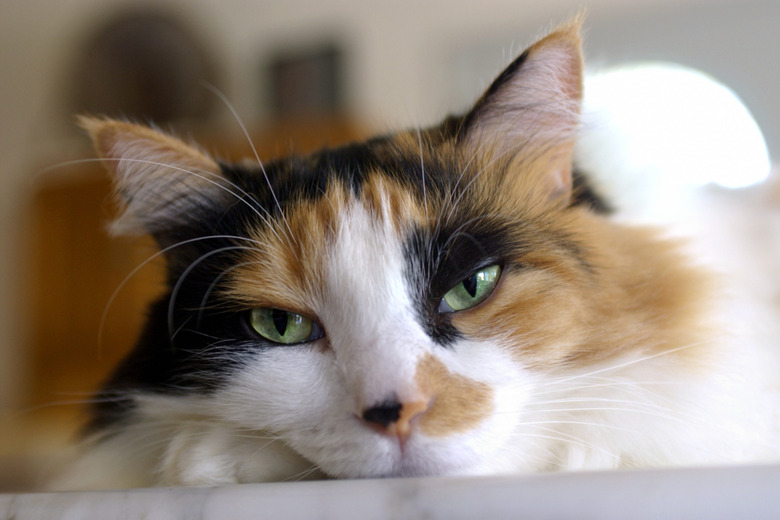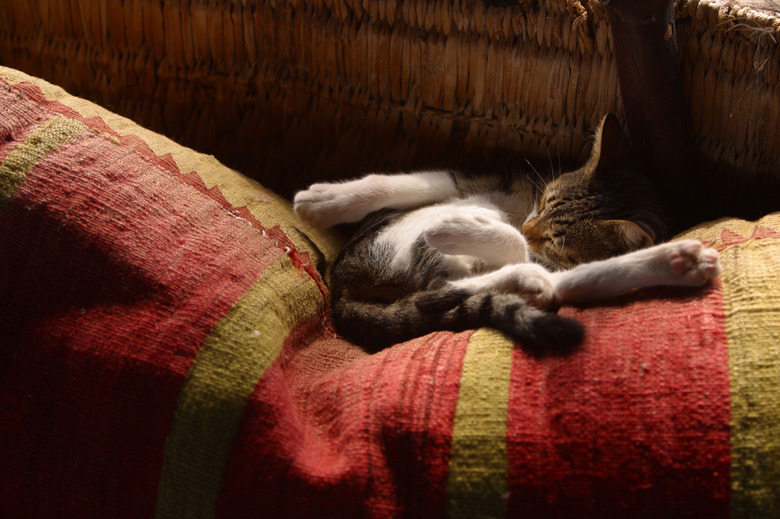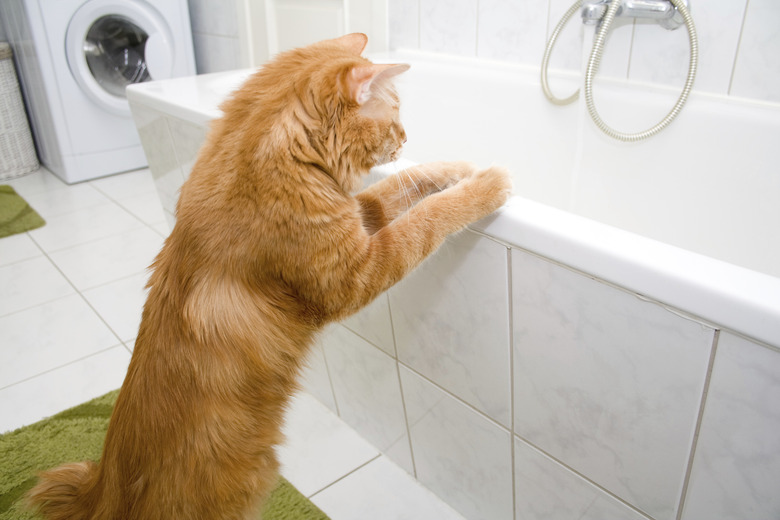Black Mold Symptoms In Cats
There are many types of mold that may grow in your home, but it is toxic black mold, or stachybotrys chartarum, that many people fear the most. The black mold itself isn't toxic, but it produces mycotoxins that can cause serious harm when the spores are inhaled. Cats can be susceptible to black mold just like humans. If you identify mold in your home, watch for exposure to mold symptoms in cats and get treatment right away. Take steps to eradicate the mold from homes, shelters, and pet care facilities for the safety of you and your pets.
Black mold symptoms in cats
Black mold symptoms in cats
Symptoms of exposure to toxic black fungus or mold in a cat include sneezing, wheezing, trouble breathing, coughing, and other unexplained allergy-like symptoms. The toxins released by the mold damage the liver and prevent it from making the factors necessary to clot blood. As a result, you may also notice blood in your cat's stool or urine and nosebleeds.
Toxic black mold has been reported as the reason for some cat deaths in the Journal of the American Veterinary Medical Association. The cats in the case study died after experiencing pulmonary hemorrhaging while under anesthesia for a dental cleaning. The cats were exposed to the mold after flooding in the home seven months earlier.
Black mold can create just enough trauma to destroy capillaries, which can cause hemorrhaging and then death. Though seemingly a rare occurrence in cats, it is still a threat.
Other mold exposure
Other mold exposure
Differentiating black mold from other types of mold in your household can be challenging without testing the mold or consulting a professional mold remediation company. If you suspect your cat was exposed to black mold or if he experiences symptoms, it is best to see a veterinarian right away. You and your pets will be safer staying outside the home until the mold can be removed.
While black mold isn't usually ingested, there are other types of mold that produce toxins that your cat may ingest. These may be found in composting material or moldy food. Symptoms may include panting, loss of appetite, vomiting, weakness, muscle tremors, and seizures.
Other types of mold can also cause problems for your cat. Symptoms may include itchy skin resulting in scratching, chewing, and licking. Often, these types of mold aren't fatal. Your vet may recommend treatment options such as allergy medication or bathing with a medicated antifungal shampoo for cats.
How to kill black mold
How to kill black mold
For such a toxic substance, black mold is relatively easy to kill. Wear protective gear and a mask to prevent further exposure to the black mold. Seal off the room where mold is growing to prevent contaminating other areas of the home. While you don't want the mold contaminating other rooms, make sure you have fans and ventilation.
Then, clean the mold with an ammonia-based solution, vinegar, or bleach. Choose one option, as mixing them may cause toxic fumes. This process is dangerous due to the use of chemicals and contact with the black mold. In addition, mold may be growing behind walls, which will need to be removed. It is usually best to hire a professional to remove and kill black mold.
Finally, prevent mold from returning. Repair any leaks that cause constant humidity or standing water. Always turn on the bathroom fan when showering or bathing. Consider getting a dehumidifier if you have trouble keeping the air dry.
References
- Journal of the American Veterinary Medical Association: Acute Pulmonary Hemorrhage During Isoflurane Anesthesia in Two Cats Exposed To Toxic Black Mold (Stachybotrys Chartarum)
- Metairie Small Animal Hospital: What's Poisonous to Pets? Part 3: Molds and Other Fungi
- Aer Industries: How To Get Rid Of Black Mold


